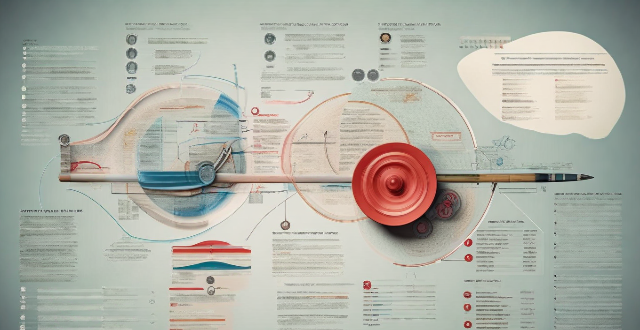Plan Evacuation

How can I create an emergency evacuation plan for my family ?
Creating an emergency evacuation plan is crucial for the safety of your family during unexpected events such as natural disasters, fires, or other emergencies. Here are some steps to help you create a comprehensive emergency evacuation plan: 1. Identify potential risks that could affect your home and community. 2. Gather important information including contact information, medical information, insurance information, and financial information. 3. Determine the best evacuation routes from your home in case of an emergency. 4. Choose a meeting place outside of your home where your family can regroup in case of an emergency. 5. Practice your emergency evacuation plan with your family on a regular basis. 6. Stay informed about potential risks and updates from local authorities.

How can I educate my family about earthquake safety and evacuation procedures ?
Educating your family about earthquake safety and evacuation procedures is crucial due to the unpredictable nature of earthquakes. Understanding the basics of earthquakes, creating a safety plan, learning evacuation procedures, conducting drills, and staying informed are all important steps in ensuring your family's safety during an earthquake. By following these steps, you can prepare your family for earthquakes and ensure they know what to do in case of an emergency.

What are the key steps to take during an emergency evacuation ?
During an emergency evacuation, it is important to stay calm and alert, follow evacuation procedures, gather essential items, check for hazards, help others, listen to instructions from authorities, move quickly but safely, and assemble at designated areas. Staying calm helps in thinking clearly and making quick decisions, while being alert means paying attention to surroundings and instructions. Familiarizing with building's evacuation procedures beforehand, looking for exit signs, avoiding elevators, and using stairs are crucial. Gathering important documents, medications, and other essential items on the way out is also important. Checking for potential hazards such as fire, smoke, or structural damage, and seeking assistance from emergency personnel if a path is blocked is necessary. Helping others who may need assistance, remaining together as a group, and staying in contact throughout the evacuation process is recommended. Listening carefully to instructions given by authorities or emergency personnel is crucial as they may provide additional information about the situation or direct to specific locations for safety or further assistance. Moving quickly but avoiding running or pushing others, watching your step to avoid tripping or falling, especially if there are obstacles or debris on the ground is important. Proceeding to the designated assembly area where authorities can take attendance and provide further instructions, and not returning to the building until instructed to do so by authorities is also recommended.

What should be included in an emergency response plan ?
An emergency response plan is a critical tool for organizations to prepare for and respond to unexpected events. It outlines the procedures and actions that should be taken during an emergency situation. Key components of an effective emergency response plan include identification of potential emergencies, roles and responsibilities, communication protocols, evacuation procedures, medical assistance, and recovery and restoration steps. By anticipating potential risks and preparing accordingly, organizations can minimize the impact of emergencies and ensure the safety and well-being of their employees and stakeholders.

How can I prepare for an emergency situation ?
The article provides a comprehensive guide on how to prepare for an emergency situation. It emphasizes the importance of being prepared for emergencies, which can strike at any time and pose a threat to the safety of individuals and their loved ones. The first step in preparing for an emergency is to assess the risks that are most likely to affect you. This involves identifying potential natural disasters or man-made emergencies that could occur in your area. Once you have identified these risks, you can begin to develop a plan for how to respond. The next step is to create an emergency kit that contains all the essential items you will need in case of an emergency. This includes water, non-perishable food, a first aid kit, a flashlight, warm clothing, a map of the area, a cell phone with charger, cash, and important documents. Having a plan in place is also crucial in ensuring that everyone knows what to do in case of an emergency. Your plan should include a designated meeting place, an evacuation route, a communication strategy, and a backup plan. Staying informed about local weather reports and news alerts is another important aspect of emergency preparedness. Signing up for community warning systems can also help you stay informed about potential emergencies in your area. Finally, practicing your emergency plan regularly can help ensure that everyone remains calm and focused during an actual emergency situation. This could involve conducting regular fire drills or practicing evacuation routes.

How do economists evaluate the effectiveness of a particular economic stimulus plan ?
Economists evaluate the effectiveness of economic stimulus plans by considering factors such as GDP growth rate, inflation rate, unemployment rate, job creation, government spending, deficit and debt levels, personal consumption expenditures, consumer confidence, sectoral analysis, regional impact, sustainability, and legacy. These evaluations help determine whether the plan has achieved its intended goals and guide future policy decisions.

What are the benefits of using a prepaid vs postpaid plan with a mobile operator ?
Prepaid mobile plans offer control over spending, no credit checks, easy setup and flexibility. Postpaid plans provide more features, better customer service, easier billing management and potential discounts for bundling services.

How do I train my employees for emergency situations ?
Training employees for emergency situations is crucial to ensure their safety and minimize the impact of emergencies on your business. Here's a summary of the key steps involved: 1. Identify potential emergencies that could occur in your workplace, such as fire, medical emergencies, natural disasters, workplace violence, and chemical spills or hazardous materials incidents. 2. Develop an emergency plan that outlines the steps employees should take during each type of emergency. This plan should include evacuation procedures, first aid protocols, contact information for emergency services, safe locations, and procedures for accounting for all employees after an emergency. 3. Conduct regular emergency drills to ensure that employees are familiar with the emergency plan and know what to do in case of an emergency. Drills should be conducted at least annually and cover all types of emergencies identified in the emergency plan. 4. Provide training on how to use safety equipment such as fire extinguishers, first aid kits, and safety goggles. This training should be provided during new employee orientation and refresher courses should be offered regularly. 5. Encourage open communication between employees and management regarding safety concerns and suggestions for improvement. This can be done through regular safety meetings, suggestion boxes, or anonymous surveys. By following these steps, you can create a safe and prepared workforce that is ready to handle any emergency situation.

What is an economic stimulus plan ?
An economic stimulus plan is a government policy aimed at boosting a country's economy during times of slow growth or recession. The primary goal of such plans is to increase consumer spending, encourage business investments, and create jobs, thereby stimulating economic activity and promoting overall growth. Key features of an economic stimulus plan include tax cuts and rebates, government spending on infrastructure projects, monetary policy adjustments, direct assistance to businesses and individuals, and incentives for investment. Benefits of an economic stimulus plan include increased economic growth, job creation, long-term gains, and reduced poverty rates. However, potential downsides of an economic stimulus plan include national debt, inflation risks, crowding out effect, and short-term vs long-term effects. In conclusion, an economic stimulus plan is a multifaceted approach employed by governments to revive flagging economies. While these plans can have significant positive impacts on growth, employment, and overall well-being, they must be carefully designed and implemented to minimize potential drawbacks such as increased national debt and inflation risks.

How much does an unlimited data plan usually cost ?
Unlimited data plans vary in cost from $60 to $105/month for one line, depending on the provider and included features. Factors affecting the final cost include the number of lines, device payment plans, taxes and fees, autopay discounts, and promotions. It's important to compare plans and consider any additional costs before choosing an unlimited data plan.

Can I include charitable giving in my estate plan ?
Including charitable giving in your estate plan is a way to support causes you care about, with potential tax benefits and the creation of a lasting legacy. You can include charitable giving through bequests in your will, charitable trusts, donor-advised funds, life insurance policies, retirement accounts, and donating appreciated stocks. It's important to consult professionals, understand tax implications, and regularly update your plan.

How can I create a successful savings plan ?
Creating a successful savings plan is essential for achieving financial goals, such as saving for a down payment, retirement, or an emergency fund. The steps to create a successful savings plan include setting clear financial goals, analyzing the current financial situation, establishing a budget, automating savings, choosing the right tools, monitoring and adjusting the plan, and seeking professional advice. Consistency and perseverance are key to success in sticking to the plan.

What are the key components of a successful disaster risk management plan ?
Key Components of a Successful Disaster Risk Management Plan include: 1. Risk Assessment 2. Prevention and Mitigation Strategies 3. Preparedness Activities 4. Response Mechanisms 5. Recovery and Rehabilitation 6. Continuous Improvement

How can I plan a food-themed travel itinerary ?
How to plan a food-themed travel itinerary: determine your food interests and preferences, research destinations with strong food cultures, create a list of must-try dishes and restaurants, plan your itinerary around food experiences, book accommodations near food hubs, pack appropriately for food adventures, and be open to new experiences and embrace local customs.

How do I know if I need an unlimited data plan for my smartphone usage ?
Do you need an unlimited data plan for your smartphone usage? Consider factors such as data usage, cost, network coverage, and family plans to make an informed decision.

What are some good sources of protein for a fitness meal plan ?
Including protein-rich foods like chicken breast, salmon, eggs, Greek yogurt, and quinoa in a fitness meal plan can support muscle building and fat loss goals.

How do I create a comprehensive estate plan ?
Creating a comprehensive estate plan is essential to ensure your assets are distributed according to your wishes after you pass away. Here are some steps to help you create a comprehensive estate plan: 1. Determine your goals and objectives, such as who you want to inherit your assets and how you want them distributed. 2. Gather information about all your assets, including real estate, bank accounts, investments, life insurance policies, and personal property. 3. Choose beneficiaries for your assets, including individuals, charities, or trusts. 4. Consider tax implications, such as federal and state estate taxes, gift taxes, and generation-skipping transfer taxes. 5. Create legal documents such as a will, power of attorney, healthcare proxy, and living will to ensure your wishes are carried out in case of incapacity or death. 6. Set up trusts to manage your assets during your lifetime and distribute them after your death. 7. Review and update your plan regularly to ensure it remains current with changes in your life. Working with a qualified professional can help ensure that your estate plan meets your needs and achieves your desired outcomes.

How do I create an effective study plan ?
Creating an effective study plan is crucial for academic success. Here are some steps to help you create a successful study plan: 1. Set clear goals that are specific, measurable, achievable, relevant, and time-bound (SMART). 2. Assess your time and determine how much you can realistically dedicate to studying each day/week. 3. Allocate time for each subject based on difficulty level and proficiency. 4. Create a schedule using a calendar or planner and stick to it as much as possible. 5. Incorporate short breaks during study sessions to avoid burnout and maintain focus. 6. Regularly review progress and adjust the study plan accordingly. 7. Eliminate distractions by finding a quiet place to study and turning off unnecessary devices. 8. Stay motivated by reminding yourself of goals and celebrating small achievements. 9. Seek help when needed from teachers, tutors, or classmates. By following these steps, you can create an effective study plan that will help you achieve academic success while managing your time efficiently. Remember to stay flexible and adjust your plan as needed to accommodate changes in your schedule or priorities.

What are the hidden fees associated with my mobile operator's plan ?
Mobile operators often have hidden fees that can add up over time and significantly increase the cost of your mobile plan. These fees include activation fees, early termination fees, upgrade fees, overage charges, international roaming charges, and administrative fees. To avoid these fees, it is important to read the fine print of your mobile operator's contract carefully before signing up and consider using a prepaid plan or paying for your phone outright.

What are the essential elements of an effective emergency response plan for construction sites ?
An effective emergency response plan for construction sites is essential to ensure safety, minimize damage, and comply with legal requirements. Key components include hazard identification, prevention measures, emergency procedures, recovery strategies, coordination, and legal compliance. Implementation involves training, drills, and regular updates based on feedback and incident debriefing.

In what circumstances is an economic stimulus plan most necessary ?
An economic stimulus plan is most necessary during times of recession, slow economic growth, high unemployment rates, or financial crisis. These plans can help to boost economic activity, create jobs, and stabilize the financial system by implementing policies such as increasing government spending, reducing taxes, providing subsidies to businesses, encouraging investment in new technologies, expanding access to credit, investing in infrastructure projects, offering tax incentives for hiring new employees, and implementing regulatory reforms.

How do I prepare for a long-distance cycling trip ?
Preparing for a long-distance cycling trip involves careful planning, physical training, and packing essential gear. Start by researching your route's terrain and weather conditions, then build up your endurance with training rides and strength exercises. Ensure your bike is well-maintained and equipped with necessary tools and bags. Pack smart with suitable clothing, navigation tools, and a first aid kit. Plan for nutrition and hydration needs, prioritize safety with visibility and communication measures, and learn basic bike repairs. Consider legal and ethical aspects like traffic laws and environmental respect. Prepare mentally for the journey's challenges and establish support systems. Finally, have contingency plans in place for unexpected weather or route changes.

How can I create a balanced fitness meal plan ?
To create a balanced fitness meal plan, start by determining your caloric needs and focus on nutrient-dense foods. Include lean protein, whole grains, fruits, vegetables, and healthy fats in your meals. Balance your macronutrients (carbs, protein, and fats) and plan your meals and snacks ahead of time to ensure you're getting the right balance of nutrients throughout the day. Stay hydrated and be mindful of portion sizes to support your health and fitness goals.

Do I need a lawyer to create an estate plan ?
Estate planning is important for ensuring that your assets are distributed according to your wishes after you pass away. While it is possible to create an estate plan without a lawyer, working with a legal professional can provide numerous benefits such as legal expertise, customized plans, and peace of mind. However, if you have a simple estate with few assets and no complicated family dynamics, creating a basic estate plan using online tools or templates may be sufficient. It is still important to consult with a lawyer to ensure that your plan meets all legal requirements and addresses any potential issues.

What are the benefits of implementing an economic stimulus plan ?
An economic stimulus plan is a set of policies designed to boost a country's economy during times of slow growth or recession. These plans are typically implemented by governments and can have a range of benefits, including increased economic activity, improved employment rates, stimulated investment, reduced inflation risk, and improved public services. By taking steps to boost the economy during times of slow growth or recession, governments can help to create a more stable and prosperous future for all citizens.

What should be included in a sports career plan ?
A comprehensive sports career plan should include personal information, career objectives, skill development, education & training, competition history, sponsorship & funding, off-field activities, health & wellness, post-retirement planning, and a conclusion. It serves as a roadmap to guide athletes through their journey in sports, ensuring they are well-prepared for every stage of their career.

How do I measure progress in my sports training plan ?
Measuring progress is crucial for athletes to track development and adjust their training plans. Set SMART goals, track performance, evaluate technique, monitor body composition, assess fitness level, and reflect on mental state to measure progress effectively.

How can I make sure my fitness meal plan is sustainable long-term ?
A sustainable fitness meal plan is essential for achieving long-term health and wellness goals. To make it work, set realistic goals, plan ahead, incorporate variety, make it enjoyable, stay flexible, and seek professional advice.

Can I share my unlimited data plan with family members or friends ?
Sharing your unlimited data plan with family members or friends can be a great way to save money and ensure that everyone has access to the internet. Before you start sharing your data plan, there are a few things you should consider. Firstly, it's important to understand what your data plan includes. Most unlimited data plans come with certain restrictions, such as throttling after a certain amount of data usage or slower speeds during peak hours. Make sure you know the details of your plan so that you can accurately communicate them to anyone you choose to share with. Secondly, not all carriers allow for data plan sharing, so it's important to check with your carrier before making any decisions. Some carriers may have specific rules about who can share your data plan and how much data they can use. Others may charge additional fees for each person added to your plan. Be sure to read the fine print and understand any potential costs or restrictions associated with sharing your data plan. Thirdly, if your carrier allows for data plan sharing, adding family members or friends to your plan is usually a straightforward process. You'll need to contact your carrier and provide them with the necessary information for each person you want to add to your plan. Once they're added to your plan, they'll be able to use your data just like you do. Lastly, when sharing your unlimited data plan, it's important to keep track of how much data each person is using. This will help you avoid unexpected overage charges and ensure that everyone has enough data to meet their needs. You can usually monitor data usage through your carrier's website or mobile app. If someone on your plan starts using more data than expected, you may need to talk to them about reducing their usage or consider upgrading to a larger data plan.

How can schools and universities improve their earthquake preparedness plans ?
The article discusses ways in which educational institutions can improve their earthquake preparedness plans, including conducting regular drills, training staff and students on preparedness, strengthening building structures, developing an emergency communication plan, and collaborating with local authorities and organizations. By implementing these strategies, schools and universities can ensure the safety of their communities during potentially devastating natural disasters.